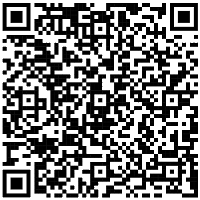1 If Sätze / Conditionals - die Bildung
If-Sätze - Conditional
If-Sätze sind Bedingungssätze. Sie bestehen aus einem Hauptsatz (main clause) und einem Nebensatz mit 'if' (if-clause). Man unterscheidet 3 Typen von If-Sätzen: If-Sätze Typ I, If-Sätze Typ II, If Sätze Typ III.
Die Bedeutung der If-Sätze Conditional
If-Satze Typ I (eins) bedeutet: Etwas ist wahrscheinlich.
If-Satz Typ II (zwei) bedeutet: Etwas ist unwahrscheinlich.
If-Satz Typ III (drei) bedeutet: Etwas ist völlig unmöglich,
was in der Vergangenheit hätte geschehen sollen.
Die Bildung der If-Sätze - Conditional
| If-Sätze Typ | If-Satz | Hauptsatz |
| If-Sätze Typ I: | Simple Present | will + Infinitiv |
| If-Sätze Typ II: | Simple Past | would + Infinitiv |
| If-Sätze Typ III: | Past Perfect | would + have + Past Participle |
Beispiele für If-Sätze Typ I, Typ II und Typ III - Conditional
Der If-Satz steht am Anfang eines Satzes. |
||
| If-Sätze Typ | If-Satz | Hauptsatz |
| If-Sätze Typ I | If the game is good, | I will play it. |
| If-Sätze Typ II | If the game was good, | I would play it. |
| If-Sätze Typ III | If the game had been good, | I would have played it. |
Der If-Satz steht am Ende eines Satzes - Conditional |
||
| If-Sätze Typ | Hauptsatz | If-Satz |
| If-Sätze Typ I | I will play the game | if it is good. |
| If-Sätze Typ II | I would play the game | if it was good. |
| If-Sätze Typ III | I would have played the game | if it had been good. |
If Satz Typ 1
Steht ein Satz im If-Satz Typ I, bedeutet dies, dass eine
Bedingung sehr wahrscheinlich eintritt.
Die Bildung If Satz Typ 1
| If-Satz | Hauptsatz |
| Simple Present | will + Infinitiv |
Beispielsätze If Satz Typ 1
If the game is good, I
will play it.
I will play the game if
it is good.
If Satz Typ 2
Steht ein Satz im If-Satz Typ 2, bedeutet dies, dass etwas
unwahrscheinlich
ist und die Bedingung damit eher nicht eintritt.
Die Bildung If Satz Typ 2
| If-Satz | Hauptsatz |
| Simple Past | would + Infinitiv |
Beispielsätze If Satz Typ 2
If I lived in Australia, I
would
be a sheep farmer.
I would
be a sheep farmer if I lived
in Australia.
If Satz Typ 3
Steht ein Satz im If-Satz Typ 3, bedeutet dies, dass etwas
unmöglich ist, weil sich die Bedingung auf die Vergangenheit bezieht.
Die Bildung If Satz Typ 3
| If-Satz | Hauptsatz |
| Past Perfect | would + have + Past Participle |
Beispielsätze If Satz Typ 3
If I had had nothing to do, I would
have come.
I
would have come
If I had had nothing to do.
Übungen zum Conditional
If-Sätze - Gemischte Übungen ... Tests
1 If-Sätze Regeln
If-Sätze Typ I - Übungen zu If-Sätzen
2 - 5 If-Sätze Typ 1
6 - 9 If-Sätze Typ 1 Fragen Verneinung
If-Sätze Typ II - Übungen zu If-Sätzen - Conditional
10 - 15 If-Sätze Typ 2 Übungen
16 If-Sätze Typ 2
17 If-Sätze Typ 2 Test
If-Sätze Typ III - Übungen zu If-Sätze- Conditional
18 - 22 If-Sätze Typ 3 Übungen
23 - 27 If-Clauses Type 3
Tests - Gemischte Übungen If-Sätze Typ I, II und III- Conditional
28 If-Sätze Test
29 Test if-Sätze Typ 1 und Typ 2
30 Test if-Sätze Typ 1, Typ 2, Typ 3
31 Tests if-Sätze Typ 1, Typ 2, Typ 3 Test
32 Conditional Typ 1, Typ 2, Typ 3
33 Welcher If-Satz-Typ ist es
34 - 37 Multiple Choice
Gemische Übungen
Arbeitsblätter If-Sätze Tpy I, II und III
If-Sätze / Conditionals / If Clauses- Regeln
Regeln für If-Sätze, Bedingungssätze im Conditional, If-Sätze Typ 1, If-Sätze Typ 2 und If-Sätze Typ 3. Erklärungen für die englische Grammatik. Online Übungen für Conditional Sentences, If - Clauses / If-Sätze. Bedingungssätze (If-Sätze). Conditionals and mixed conditionals mit den If Clauses.
Scan mich! QR-Code für If-Sätze und Conditional Übungen: |
 |
Conditional sentences with two clauses. Der Bedingungssatz besteht aus zwei Teilen: Hauptsatz (main clause) und Nebensatz mit 'if' (if clause). Online - Übungen mit Lösungen zu If-Sätzen. If-Clauses für Klasse 7, Klasse 8, Klasse 9, Klasse 10.
nächste Übung